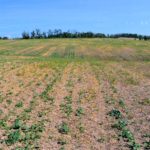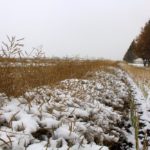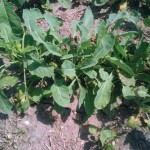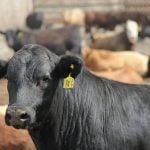In mid-May I got a call from David, who grows 2,000 acres of canola, wheat, soybeans and peas on his farm in southeastern Manitoba. It had been three weeks since David had planted his canola crop, but he was seeing very poor emergence in the field. David had hoped for eight to 10 plants per […] Read more
Tag Archives canola

Crop Advisor’s Casebook: Poor emergence in canola crop
A Crop Advisor's Solution from the May 19, 2015 issue of Grainews

Research, development and discussion
Researchers develop crop protection products, regulators limit use and consumers worry
Syngenta is a household name for farmers so I was quite excited at the opportunity to visit its Crop Protection plant in Stein, AG, Switzerland, this January with the Swiss Farm Writers Association. The Stein plant is the third largest globally and concentrates on research and development of fungicide and insecticide products. Less than three […] Read more

The value of spring-threshed canola
Will it be worth salvaging and selling the canola left out in your field this winter?
Many growers across the Prairies are facing the reality of canola that’s been left out in fields over winter. Over the past few weeks, I’ve been talking to players in the canola buying and processing industry to find out who will buy spring-threshed canola, and to learn about some of their concerns. Major grain companies […] Read more

How good or bad is that unharvested crop?
Hart Attacks: Farmers and processors won’t really know until quality is tested
I am sensing a muffled drum roll in parts of Western Canada right now as a few thousand farmers across central and northern B.C., Alberta and Saskatchewan are waiting to see what this unharvested crop looks like, when they do have a chance to get it combined. There were several thousand acres — about 10 […] Read more

Lower canola target plant stands
With newer canola varieties, farmers can hit optimum yields with lower plant counts
New canola varieties and changing economics have pushed target plant stands lower, says Murray Hartman, oilseed specialist with Alberta Agriculture. The “economic sweet spot” is now four to six plants per square foot, Hartman told farmers and agronomists at the Canola Council of Canada’s CanoLAB in Vermilion, Alberta. Hartman recently reviewed published trial data looking […] Read more

Crop Advisor’s Casebook: Irregular strips of struggling canola
A Crop Advisor's Solution from the April 4, 2015 issue of Grainews
In early July I received a phone call from Dwane, a grain farmer at Davin, Sask., who was seeing a peculiar pattern forming in one of his canola fields. Dwane told me that despite some heavy June rains, his early canola establishment had been excellent — he had achieved his target plant density and the […] Read more

When to spray cabbage seedpod weevil
If you have to spray for the cabbage seedpod weevil, get the timing right
The first time Alberta grain farmer Jay Schultz remembers hearing about cabbage seedpod weevil was in 2005 at the University of Alberta when Dr. Lloyd Dosdall warned that it could become a major pest in the province. Schultz, who farms 6,000 acres near Standard, Alta., said that he never really paid attention, that is, until […] Read more

New online calculators available from the Canola Council of Canada
Just in time for spring seeding, the Canola Council of Canada has released new seeding rate and plant stand calculators. The Canola Council’s press release says,“growers often default to seeding rates of five lbs./ac. or lower, regardless of seed size or field conditions.” Using these new tools will make it easier for farmers to make […] Read more

No point in quarantine for verticillium wilt, CFIA says
Slapping federal quarantines on canola fields with verticillium wilt wouldn’t serve much purpose, since the yield-robbing fungi is already in all of Canada’s major canola-growing areas, the Canadian Food Inspection Agency says. While the agency itself is recommending against regulation, CFIA on Wednesday posted a draft of a risk management document on verticillium wilt, seeking […] Read more

Cool, dry canola keeps best when left alone
For farmers who plan to keep canola in bins through the hottest months of the year, a new Prairie study suggests that to manage bin temperature, less handling is better. Having set out to study how best to manage higher-moisture canola over the spring and summer, a team from the Prairie Agricultural Machinery Institute (PAMI) […] Read more


